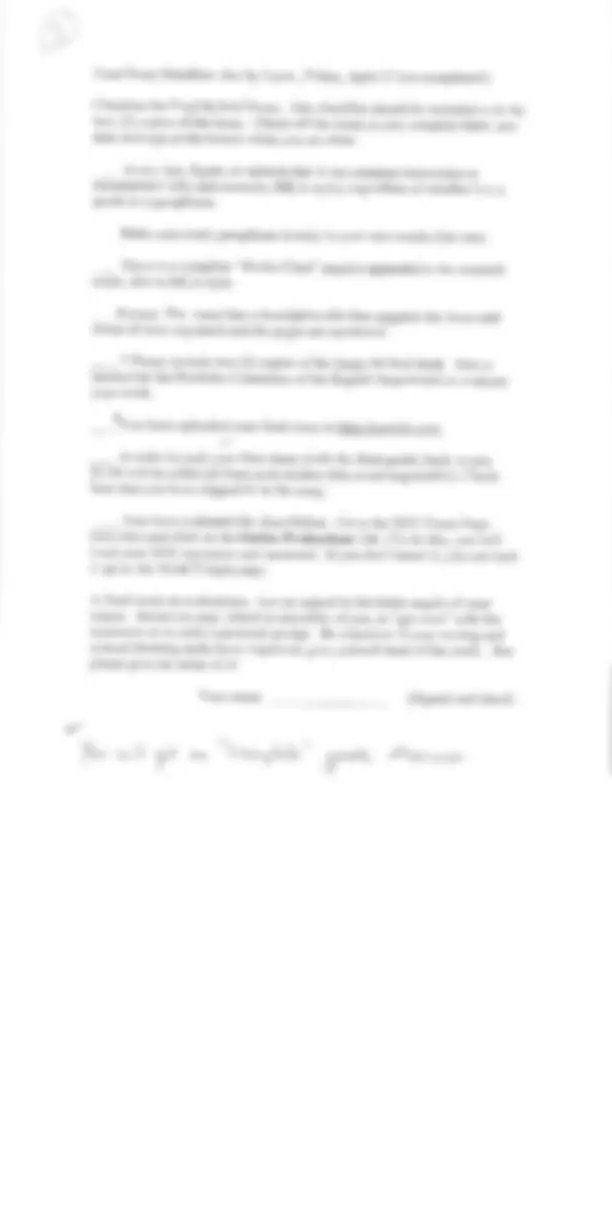Partial preview of the text
Download Oral Reports on Introduction to Academic Writing - Study Guide | ENGL 1010 and more Study notes English Language in PDF only on Docsity!
ORAL REPORTS: the presentations occupy six to eight minutes per individual. Each person has the opportunity to present their essay and the results of their research. Note: do not simply plan to read your essay or your sources, but rather prepare some interesting way to present your thoughts to the class. The reports are mostly informational, but you should also describe your thesis and the main arguments in your essay. Feel free to discuss, in addition, whatever problems you faced and overcame in the research and writing. Purpose: To allow you to present your findings to your peers To allow you to organize an oral presentation To allow you to refine your literacy skills as a speaker To give your peers the opportunity to learn from your research and writing Method: Your goal in your oral report should be to demonstrate what you have learned while, at the same time, engage the class in your presentation. You will not simply read your paper out loud; you will provide a presentation that summarizes your research and your writing. One strategy for organizing your oral report would be to outline your paper, then to touch on each one of the main points you focus on. You may: use handouts to help illustrate your points. Use BRIEF video or audio clips of people, places, or events important to your topic. Read interesting sections from your paper and/or your research that give your peers insight into the work you have done. 









